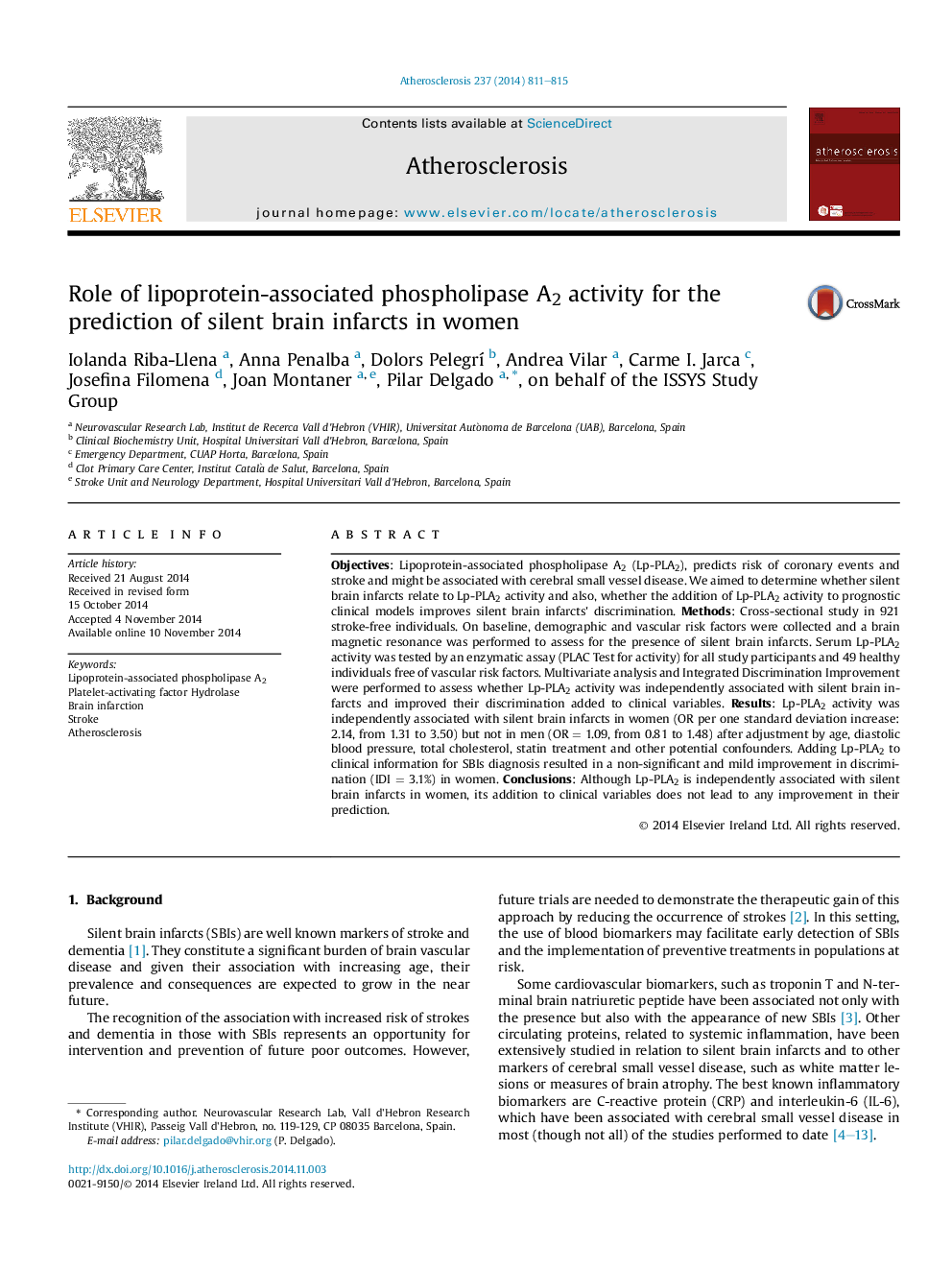| کد مقاله | کد نشریه | سال انتشار | مقاله انگلیسی | نسخه تمام متن |
|---|---|---|---|---|
| 5945405 | 1172350 | 2014 | 5 صفحه PDF | دانلود رایگان |

- We determined serum Lp-PLA2 activity in 921 subjects free of clinical stroke.
- Lp-PLA2 activity is increased in subjects with silent brain infarcts.
- Lp-PLA2 is an independent predictor of silent brain infarcts in women but not in men.
- Lp-PLA2 activity does not improve discrimination for silent brain infarcts over clinical information.
Objectives: Lipoprotein-associated phospholipase A2 (Lp-PLA2), predicts risk of coronary events and stroke and might be associated with cerebral small vessel disease. We aimed to determine whether silent brain infarcts relate to Lp-PLA2 activity and also, whether the addition of Lp-PLA2 activity to prognostic clinical models improves silent brain infarcts' discrimination. Methods: Cross-sectional study in 921 stroke-free individuals. On baseline, demographic and vascular risk factors were collected and a brain magnetic resonance was performed to assess for the presence of silent brain infarcts. Serum Lp-PLA2 activity was tested by an enzymatic assay (PLAC Test for activity) for all study participants and 49 healthy individuals free of vascular risk factors. Multivariate analysis and Integrated Discrimination Improvement were performed to assess whether Lp-PLA2 activity was independently associated with silent brain infarcts and improved their discrimination added to clinical variables. Results: Lp-PLA2 activity was independently associated with silent brain infarcts in women (OR per one standard deviation increase: 2.14, from 1.31 to 3.50) but not in men (ORÂ =Â 1.09, from 0.81 to 1.48) after adjustment by age, diastolic blood pressure, total cholesterol, statin treatment and other potential confounders. Adding Lp-PLA2 to clinical information for SBIs diagnosis resulted in a non-significant and mild improvement in discrimination (IDIÂ =Â 3.1%) in women. Conclusions: Although Lp-PLA2 is independently associated with silent brain infarcts in women, its addition to clinical variables does not lead to any improvement in their prediction.
Journal: Atherosclerosis - Volume 237, Issue 2, December 2014, Pages 811-815